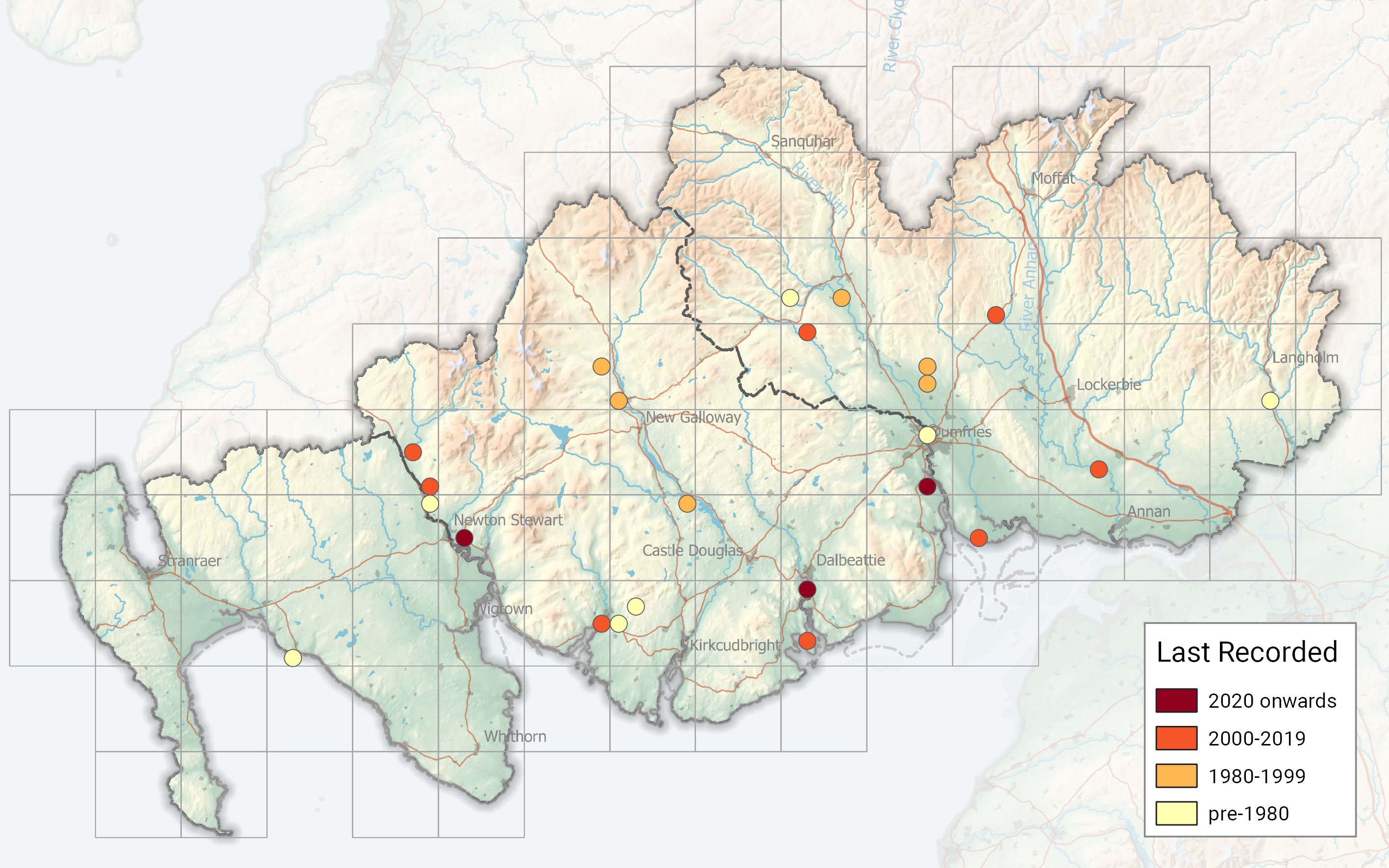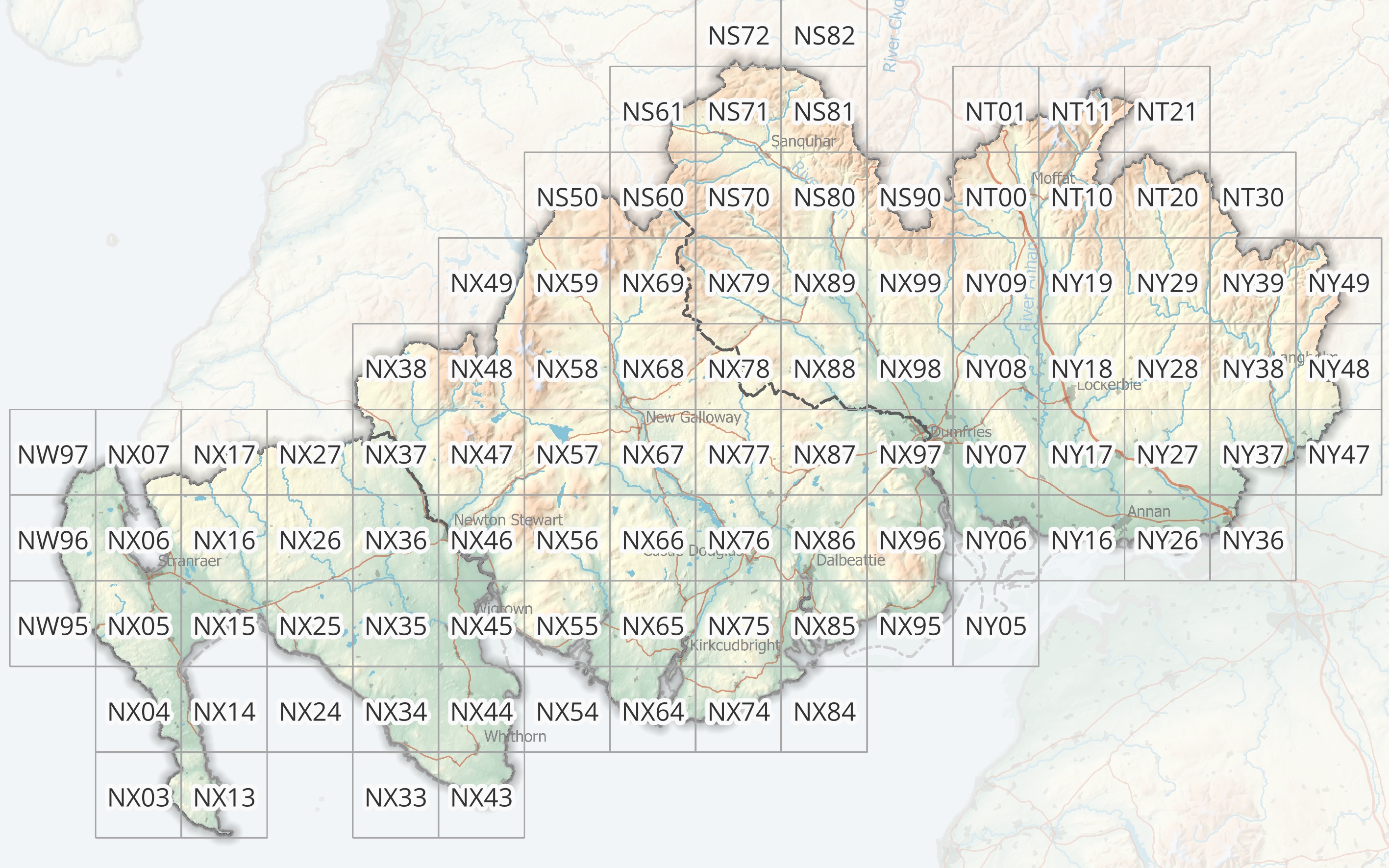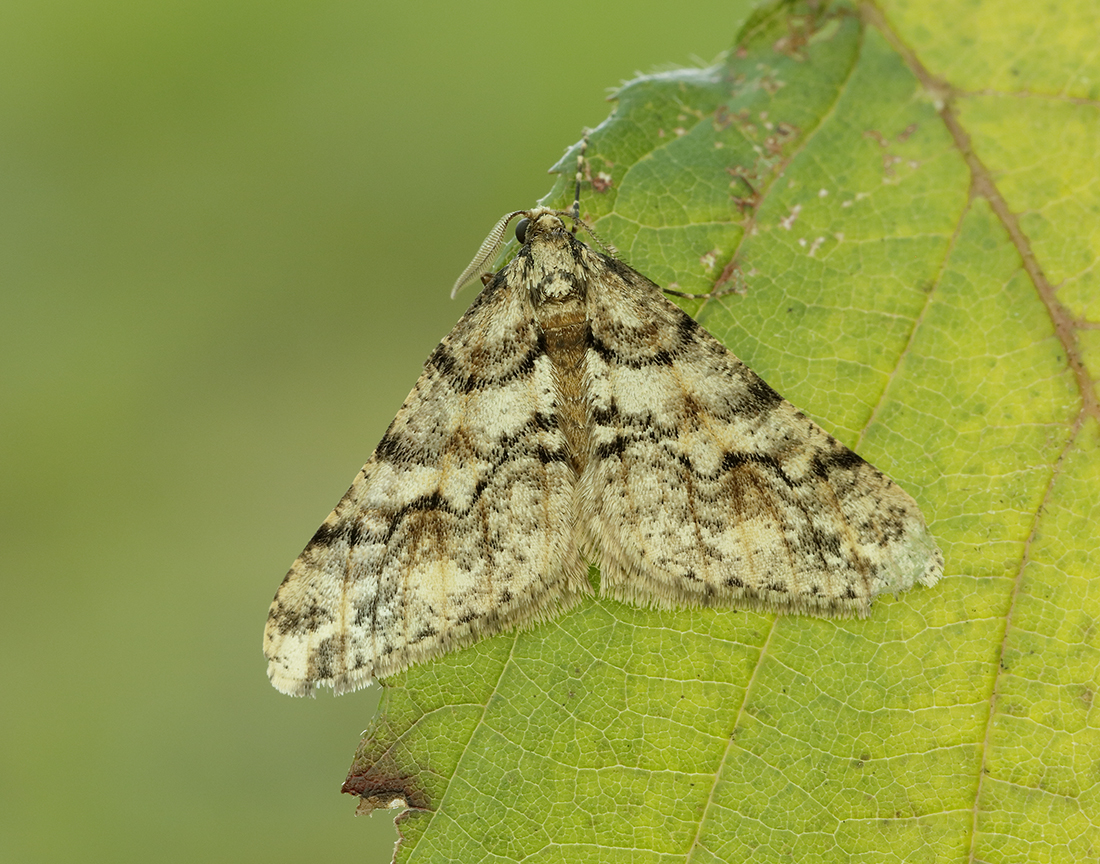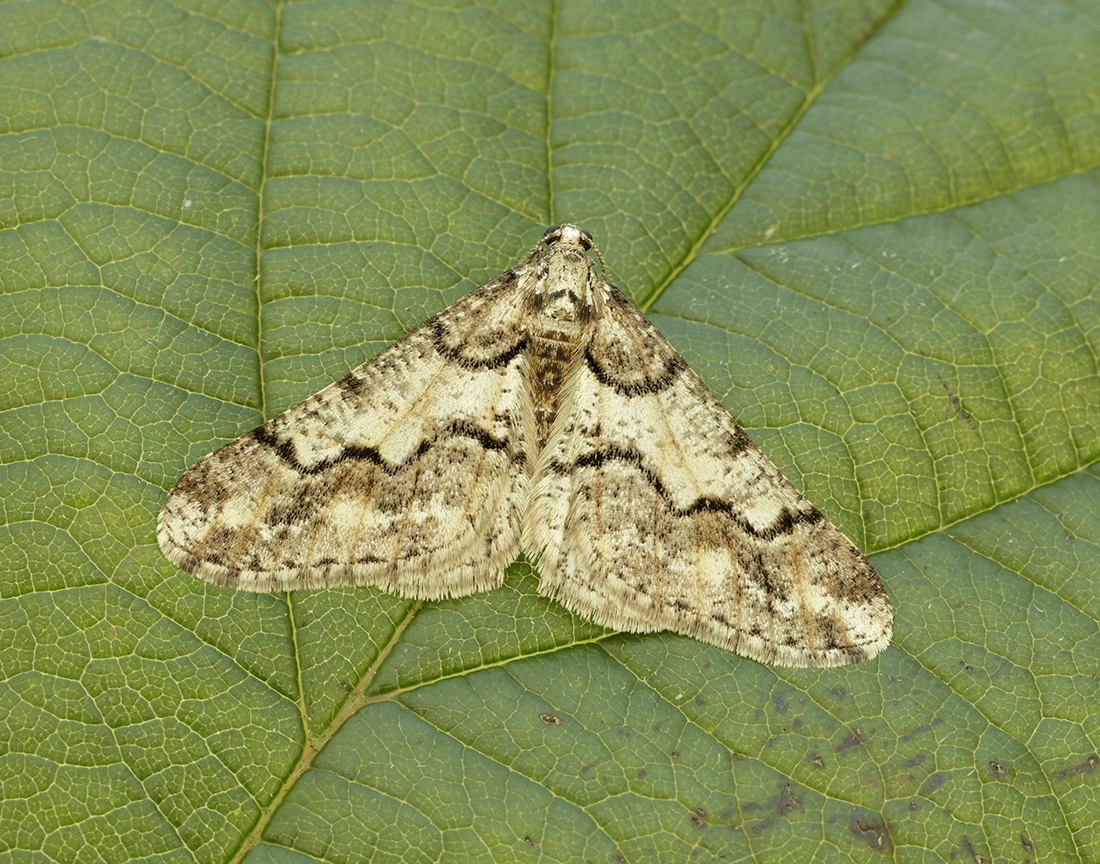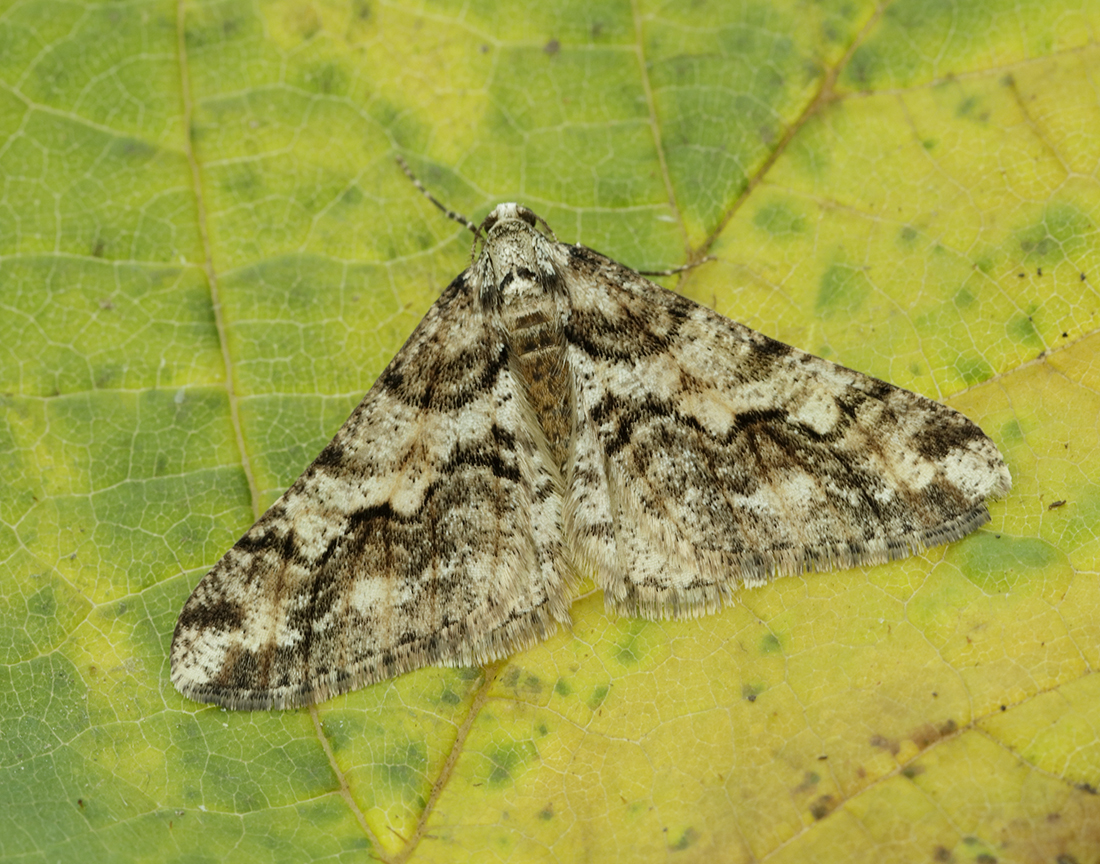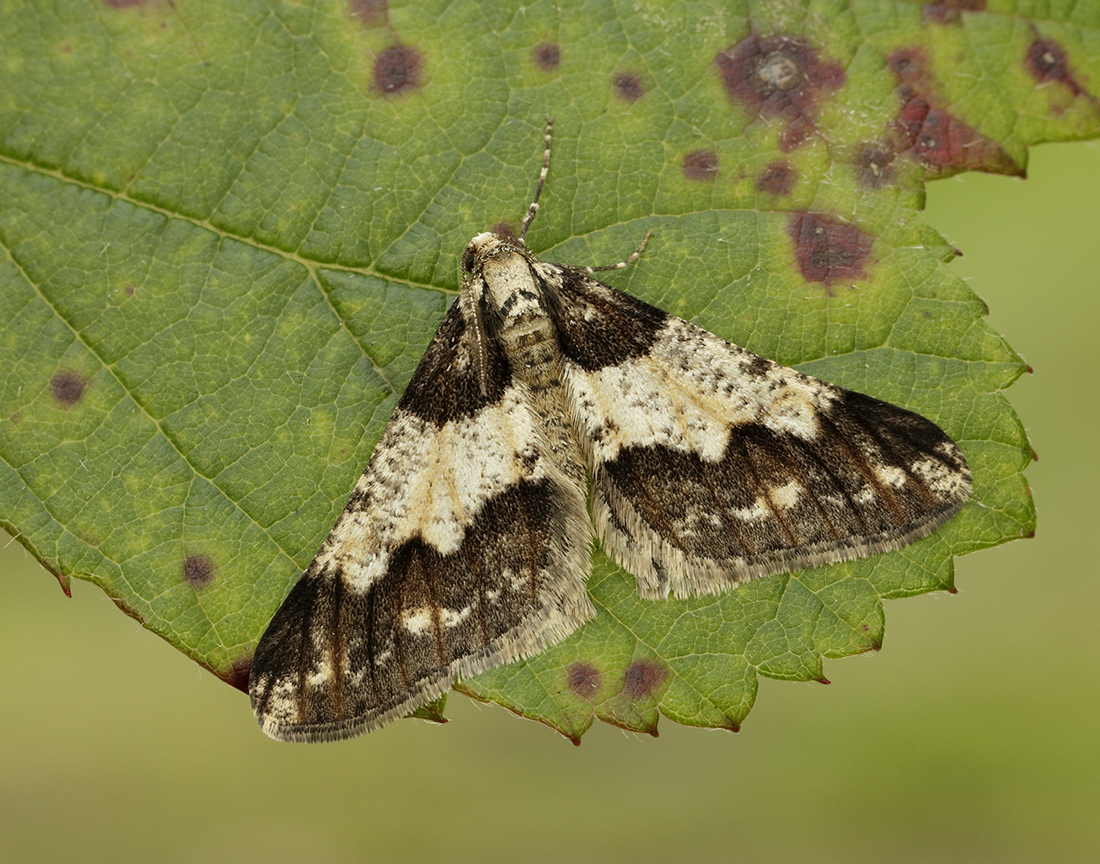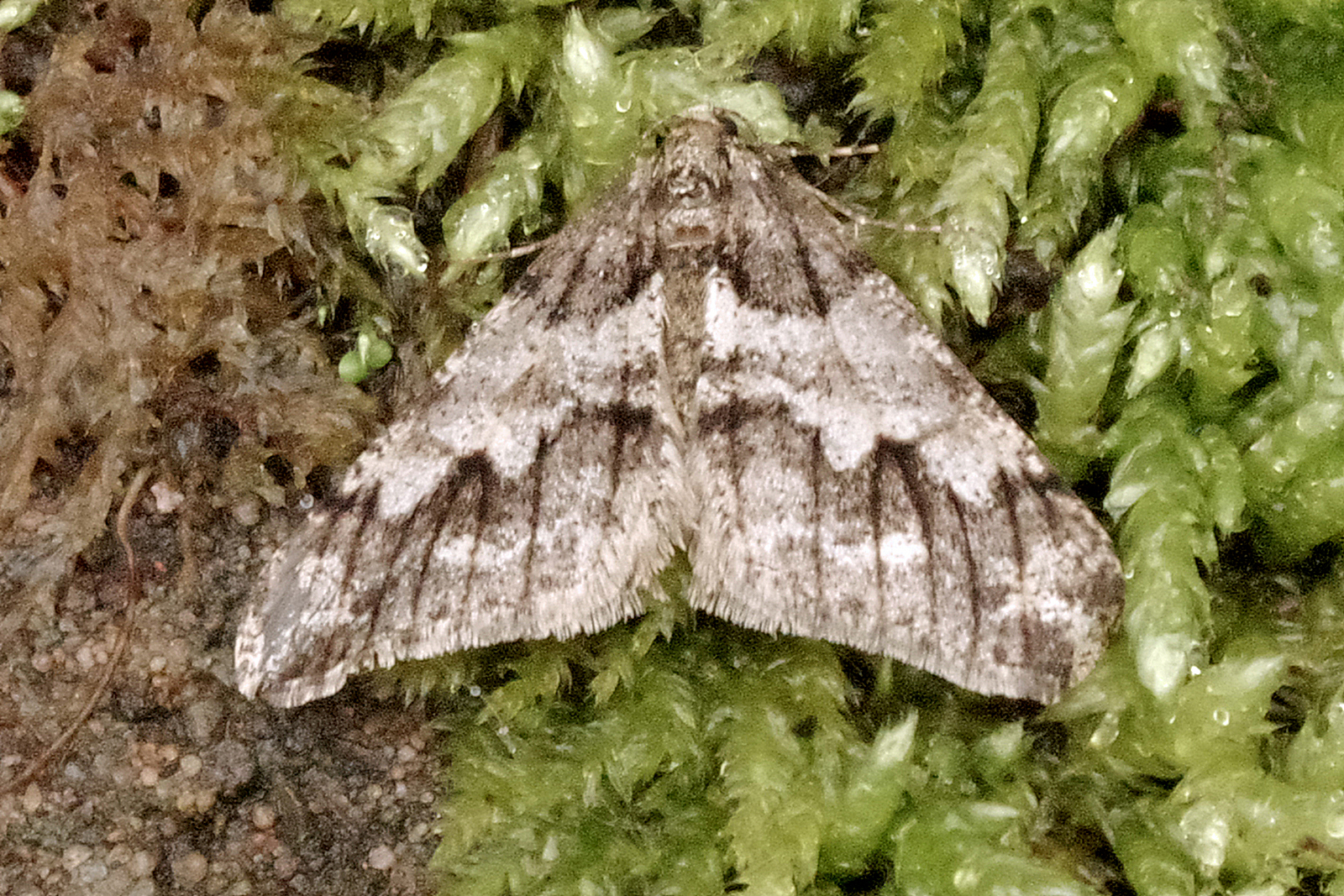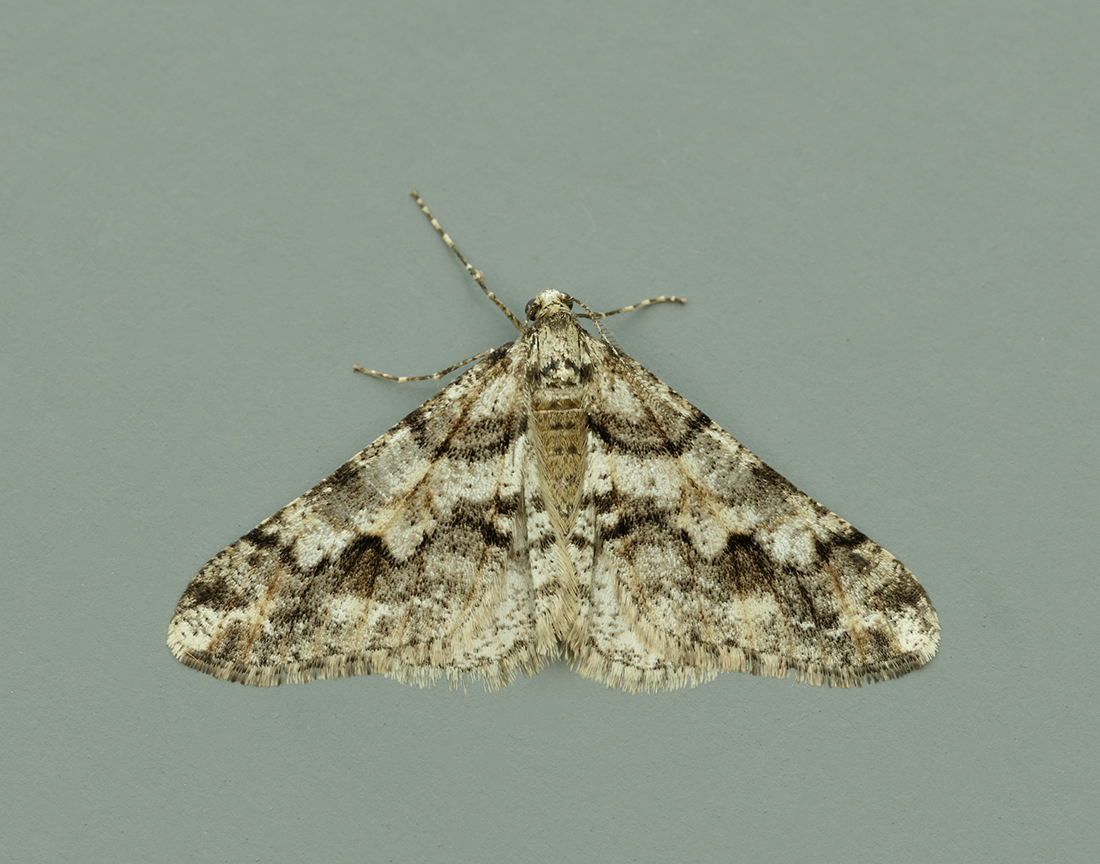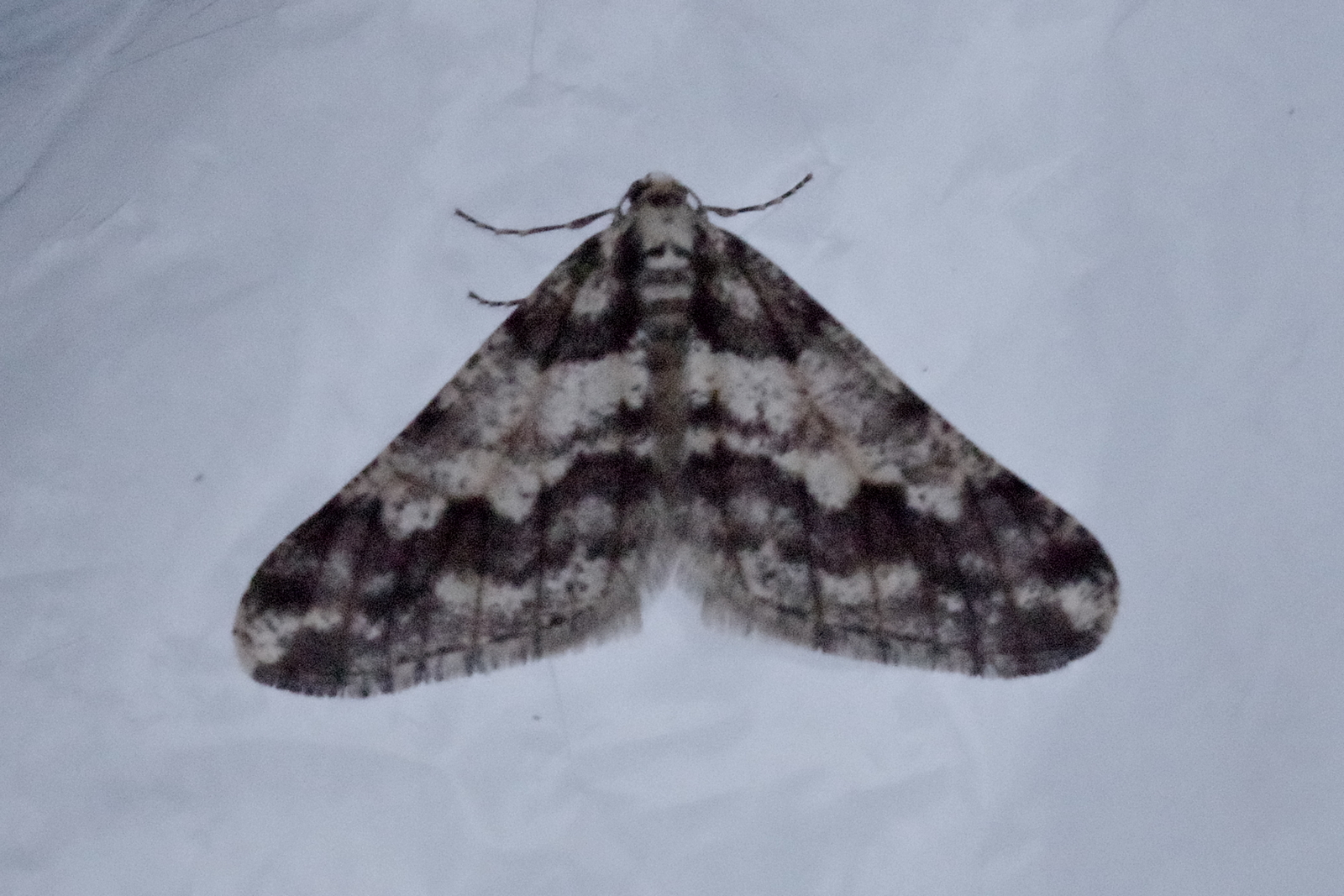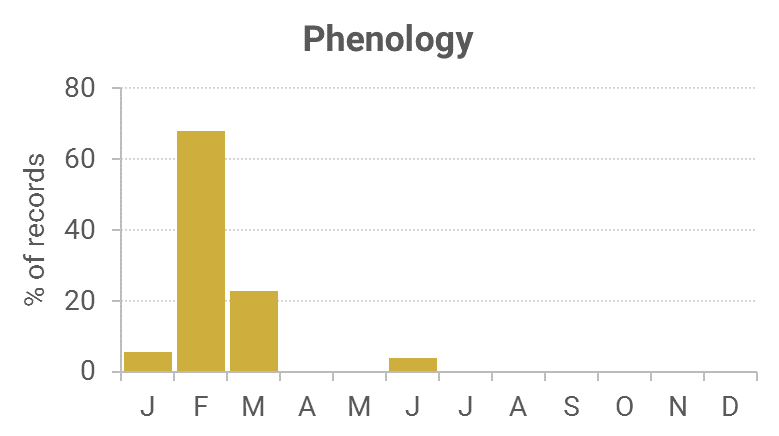Identification
The male is of a smaller size than other closely-related species, with triangular forewing that has a slightly concave costa and a wavy outer cross-line to separate it. Female is wingless and flightless. Please record the sex when sending in records.
Recording method
Adult females can be found at the base of tree trunks in the morning, males come to light.
Life cycle
One generation. Overwinters as a pupa underground. Larvae are present from early April to mid June.
Larval foodplants
Pedunculate Oak and Sessile Oak.
Habitat
Mature, especially ancient, oak woods. May also be found in other habitats where mature oaks are present.
History
First recorded for Dumfries and Galloway in 1892 for VC73 at Mabie Forest by Lennon, in 1910 for VC74 at Corsemalzie by Gordon who stated that several were ‘bred on from larvae taken by J. Garraway near the Cock Inn, Luce Bay, in June 1902’ and in 1951 for VC72 at Tynron by Duncan.

